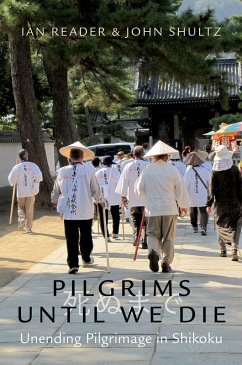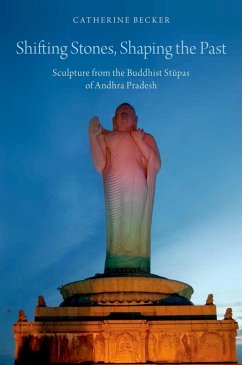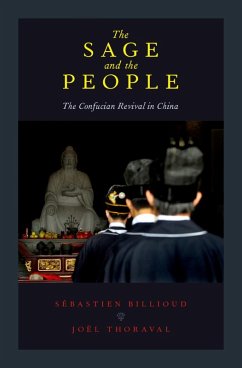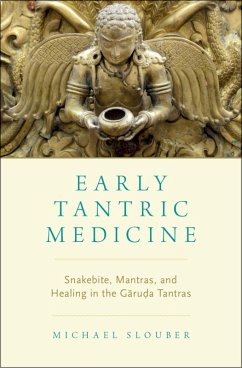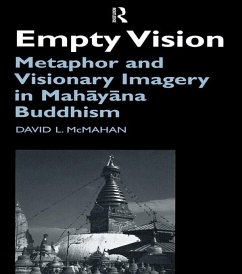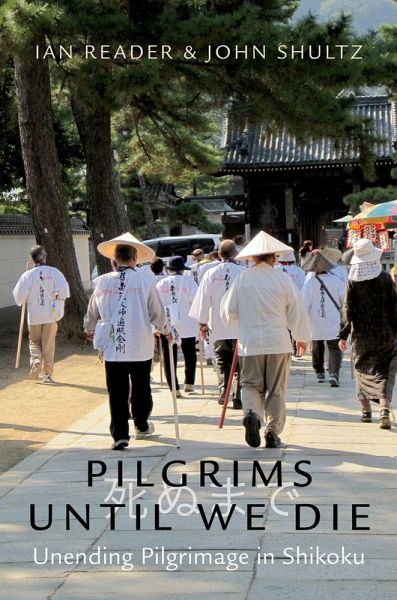
Pilgrims Until We Die (eBook, ePUB)
Unending Pilgrimage in Shikoku

PAYBACK Punkte
6 °P sammeln!
The Shikoku pilgrimage, a 1400 kilometre, eighty-eight temple circuit around Japan's fourth largest island, takes around forty days by foot, or one week by car. Historically, Buddhist ascetics walked it without ceasing, creating a tradition of unending pilgrimage that continues in the present era, both by pilgrims on foot and by others in cars. Some spend decades walking the pilgrimage, while others drive it repeatedly, completing hundreds of pilgrimage circuits. Most are retired and make the pilgrimage the centre of their post-work lives. Others who work full-time spend their holidays and wee...
The Shikoku pilgrimage, a 1400 kilometre, eighty-eight temple circuit around Japan's fourth largest island, takes around forty days by foot, or one week by car. Historically, Buddhist ascetics walked it without ceasing, creating a tradition of unending pilgrimage that continues in the present era, both by pilgrims on foot and by others in cars. Some spend decades walking the pilgrimage, while others drive it repeatedly, completing hundreds of pilgrimage circuits. Most are retired and make the pilgrimage the centre of their post-work lives. Others who work full-time spend their holidays and weekends as pilgrims. Some have only done the pilgrimage a few times but already imagine themselves as unending pilgrims and intend to do it until we die. They talk happily of being addicted and having Shikokuby?, 'Shikoku illness', portraying this 'illness' and addiction as blessings. Featuring extensive fieldwork and interviews, this study of Japan's most famous Buddhist pilgrimage presents new theoretical perspectives on pilgrimage in general, along with rich ethnographic examples of pilgrimage practices in contemporary Japan. Pilgrims Until We Die counteracts normative portrayals of pilgrimage as a transient activity, defined by a temporary leave of absence from home to visit sacred places outside the parameters of everyday life, showing that many participants view pilgrimage as a way of creating a sense of home and permanence on the road. Examining how obsession, devotion, and a sense of addiction aided by modern developments and economic factors have created a culture of recurrent pilgrimage, Pilgrims Until We Die challenges standard understandings of pilgrimage.
Dieser Download kann aus rechtlichen Gründen nur mit Rechnungsadresse in A, B, BG, CY, CZ, D, DK, EW, E, FIN, F, GR, HR, H, IRL, I, LT, L, LR, M, NL, PL, P, R, S, SLO, SK ausgeliefert werden.




